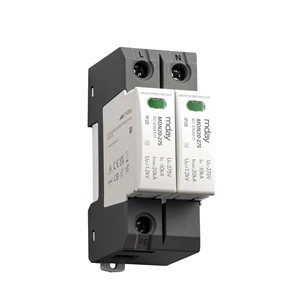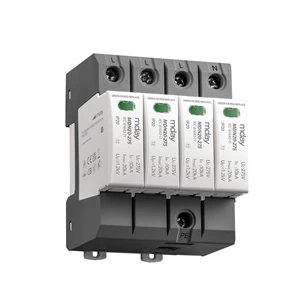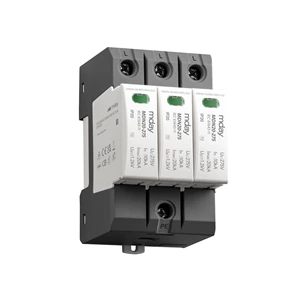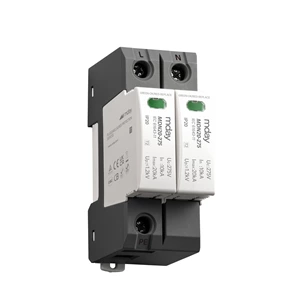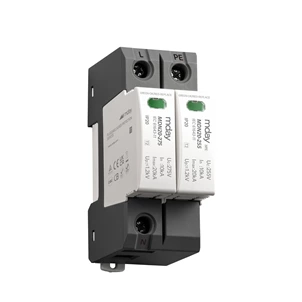Surge Protectors: A Crucial Component For Protecting Power Systems
I. Introduction
Power systems are frequently affected by sudden electromagnetic interference from sources such as lightning strikes, switching operations, and power failures during operation. These surges cause rapid voltage changes, posing potential damage and failure risks to electrical equipment. To protect electrical equipment from surge interference, surge protective device have become indispensable devices.
II. Function and Principle of Surge Protectors
1. Function: Surge protectors are primarily used to absorb and disperse overvoltages entering the power system to protect sensitive equipment from surges. They can guide the energy of the overvoltage to the ground wire or other acceptable path, preventing damage and failure of equipment.
2. Principle:
a. Breakdown Voltage: surge protector have a breakdown voltage lower than the equipment's breakdown voltage, allowing them to break down preferentially during a surge, releasing the surge energy to the ground wire or other path.
b. Energy Absorption: Surge protectors have built-in energy absorption devices that can absorb the high energy in the surge and disperse it, reducing the impact on equipment.
c. Response Time: Surge protectors need to have a fast response time to quickly guide current when a surge occurs and reach a protective state within a short period.
III. Applications of Surge Protectors
1. Power Plants: Power generation equipment in power plants is highly sensitive to surges, therefore, high-level transient voltage protectors are needed to protect the equipment from surge interference from the power grid.
2. Transmission Lines: Long-distance transmission lines are susceptible to interference such as lightning strikes, requiring transient current protectors to protect transmission lines and transformers from surge damage.
3. Power Transformers: As a crucial component of the power system, power transformers often face the risk of surges. Installing appropriate surge protection device at the input and output terminals of transformers can protect them from surges.
4. Data Centers: Various devices within data centers are highly sensitive to surges; surge interference can lead to data loss or equipment damage. Therefore, surge protectors are widely used in data centers to protect the stable operation of equipment.
IV. Considerations for Selecting Surge Protectors
1. System Requirements: Understand the power system's operating voltage, rated current, frequency, and other parameters, as well as the system's reliability requirements and the sensitivity of the protected equipment.
2. Protection Level: Determine the required protection level based on system requirements and the importance of the protected equipment. Different levels of surge protectors have different withstand capabilities and protection capabilities.
3. Technical Specifications: Refer to relevant technical specifications and standards, such as IEC 61643-1, to understand the performance requirements and testing methods of surge protectors.
4. Type and Rated Parameters: Select the appropriate surge protector type and rated parameters, such as rated voltage, rated current, and response time, based on the characteristics and requirements of the power system. Also consider the installation and connection methods of the surge protector to ensure compatibility with the power system.
5. Maintenance and Troubleshooting: Select surge protectors that are easy to maintain and troubleshoot, so that they can be repaired or replaced promptly when needed.
6. Professional Consultation: When selecting surge protectors, consult professional power system engineers or suppliers for expert advice and technical support. 7. Field Testing and Evaluation: Before making a final selection, conduct field testing and evaluation to ensure that the selected surge protector meets system requirements and expected performance.
V. Conclusion
Surge protectors play a crucial role as a vital component in protecting power systems. By selecting and using surge protectors appropriately, the stability and reliability of the power system can be improved, and the risk of equipment damage and failure can be reduced. When selecting surge protectors, factors such as system requirements, protection level, technical specifications, type and rated parameters, maintenance, and troubleshooting must be considered. Correct selection and application of surge protectors help protect the normal operation of the power system and ensure the safety and reliability of equipment.






